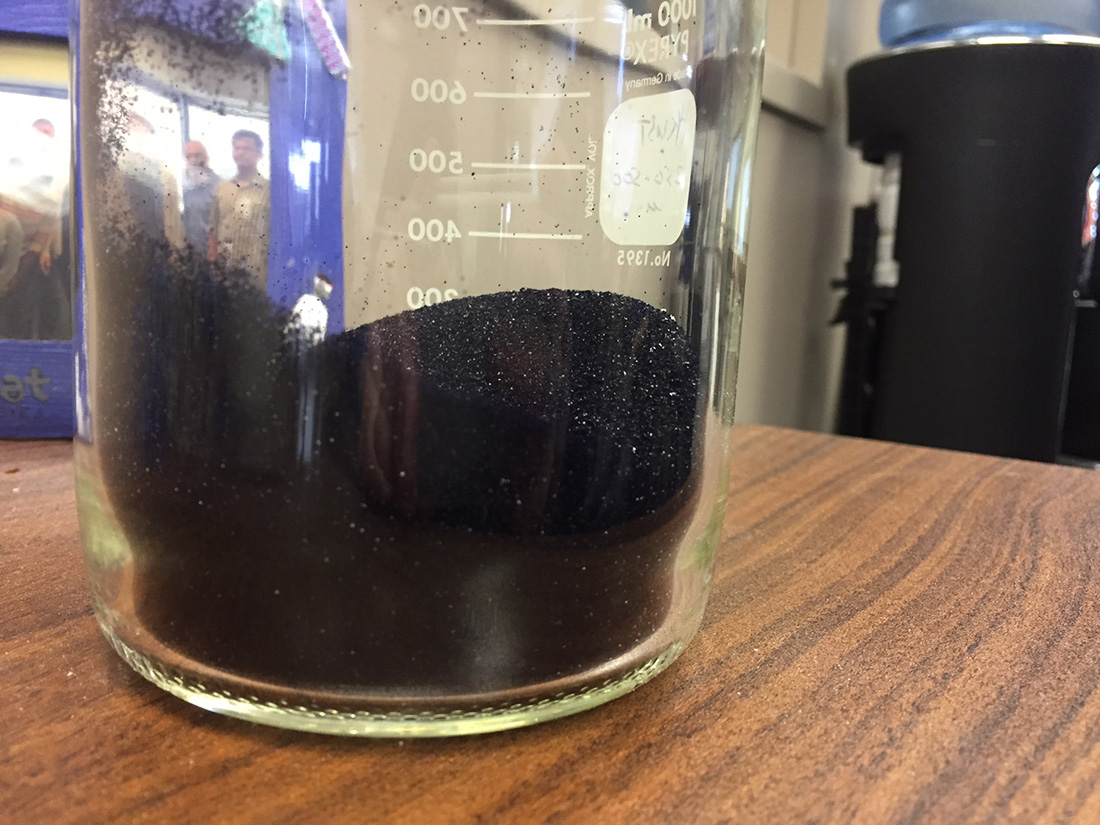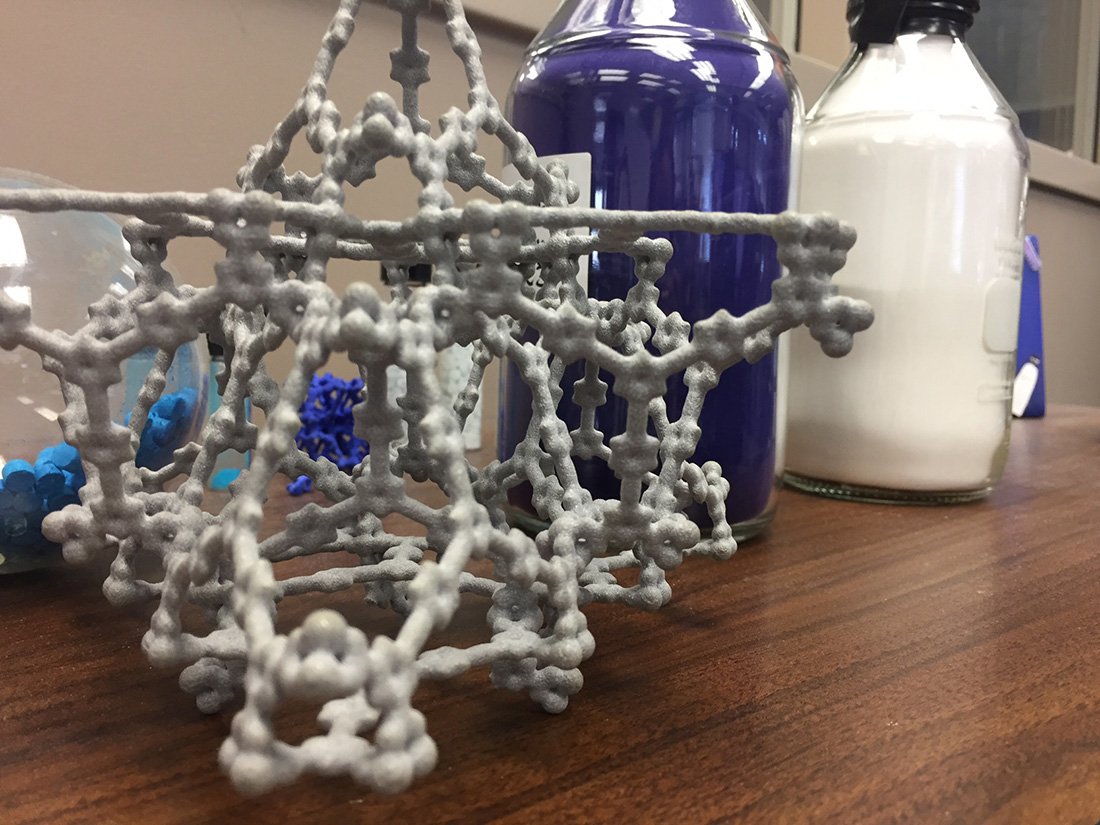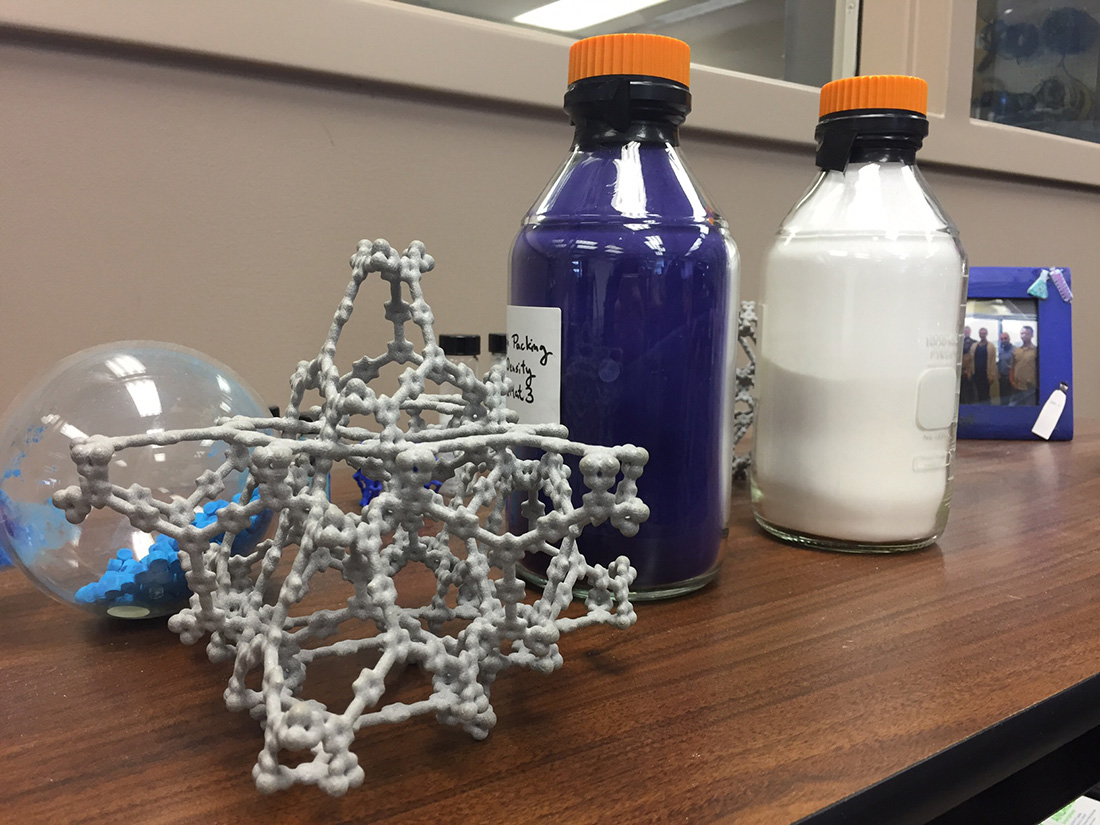By Kaitlin Schuler
What if there was a way to make vehicles’ gas tanks more efficient and safer for the environment? A way to make portable oxygen tanks more practical and manageable for those who need them?
NuMat Technologies Inc., a startup in Skokie, is engineering a way to make both a reality.
The company aims to use high-performance materials known as MOFs, or metal-organic frameworks, to store gases and enhance a number of industries, including car fuel storage and oxygen storage. Its technology aims to design storage for gases that obviates high compression storage. When MOFs are stored inside a cylinder or other structure, they provide much more surface area for the stored gas to cling to and significantly increase efficiency of the space used.
“It used to be thought impossible to scale up the production of MOFs,” said NuMat business development associate Michael Wolfenson. “But now we’re trying to commercialize MOFs to use in real world applications.”
NuMat was born out of nanotechnology research labs at Northwestern University and comprised members of four Northwestern schools at its inception: Kellogg School of Management, the Pritzker School of Law, the McCormick School of Engineering and Applied Science and the Weinberg College of Arts and Sciences. Today chief executive officer Benjamin Hernandez, a graduate student who was pursuing a JD-MBA at inception of the company, and chief scientific officer Omar Farha, a research professor, still work directly with NuMat, and Christopher Wilmer remains an advisor.

How do MOFs improve gas storage capabilities?
MOFs are a form of nanotechnology featuring two components: metal ions and organic molecules known as linkers. The combination choice of metal and linker affects the structure and use of a particular MOF. So, the MOF used to store oxygen and the one used to store gasoline to power cars have a different structure. Wolfenson compared MOFs to using seasonings in the kitchen: all of the seasonings belong to the same family, but each seasoning does something a little bit different.
But what MOFs have in common is their extremely large surface area. In 2012, the NuMat founding team published “Metal-organic Framework Materials with Ultrahigh Surface Areas: Is the Sky the Limit?” in the Journal of the American Chemical Society where they reported designing two MOFs with, they claimed, the highest surface area of any porous material on record. According to NuMat’s website, one gram of one of these MOFs can unfold to cover over 1.5 football fields.
“We’ve designed a complex algorithm that can give you the best ideas to try and design a MOF,” Wolfenson explained, “cutting down these processes that could take months into minutes or seconds.”

What has NuMat raised so far, and what are its next steps?
NuMat has been endorsed by a range of institutions, from the U.S. Department of Defense to the Royal Society of Chemistry. Even companies with seemingly nothing in common with NuMat have endorsed its efforts, including outdoor apparel and supplies company Patagonia Inc. Through an internal fund set up to help companies that have mission statements with which Patagonia agrees, the apparel company invested in NuMat in June 2015.
“Energy processing, distribution and storage drive 10 percent of global energy consumption,” Patagonia said in a company publication. “Patagonia’s investment in NuMat represents a strong step forward in the effort to reduce that number substantially in the future by transforming transportation, health care and utility-scale energy processing and storage.”
NuMat boasts a number of awards since its inception in May 2011, and it won the first-ever U.S. Department of Energy National Clean Energy Business Plan Competition in 2012 in Washington, D.C. The company went up against five other clean-energy technology teams from universities nationwide and won not only the title, but $100,000 in cash plus $80,000 of in-kind services, which include design, technical and legal assistance.
Another award was even richer. “We’re the first company out of Northwestern that applied for the Rice Business Plan Competition in 2012,” Wolfenson said. NuMat won that year, taking home $874,300, according to Rice University’s website. The prize money comes from venture capitalists and industry experts who partner with Rice University for the competition and are in search of startups in which to invest.
The Rice University Business Plan Competition is the “largest and richest graduate-level business plan competition in the world,” according to its website. When it began in 2001, nine teams competed and the prize money was $10,000. By 2012, there were 42 teams from around the globe competing for more than $1.55 million total cash and prizes.
To date, NuMat has received over $1.3 million of funding from awards and prizes alone. Moreover, it closed its seed round with $2 million in 2013 and hopes to continue the positive trend as it begins revenue-generating operations, targeted for the end of this year. NuMat closed its investment round in December 2015, but declined to disclose that amount.

Most recently, the company has taken on contracts with the U.S. Army and the Defense Department to design and implement forward-looking solutions for the defense sector of the United States.
“If you use materials that are better,” Wolfenson said, “you can save money. One of our short-term goals includes improving gas masks, particularly for the military. By filling them, or any other container, to the brim with MOFs, you can fit much more.”
NuMat’s medium- and long-term goals include oxygen storage and eventually hydrogen and natural gas storage. Portable oxygen concentrators, used by patients with chronic obstructive pulmonary disease or low oxygen levels, are currently the size of a piece of carry-on luggage and can be difficult for the user to actually transport anywhere, according to Wolfenson.
By utilizing MOFs, these concentrators could get much smaller and still store just as much concentrated oxygen. Wolfenson says NuMat hopes to achieve something similar with gas tanks for vehicles as well.
“MOFs are great at soaking up gases,” Wolfenson said. “Storage tanks for cars that would store more gas, and make the gas more useful overall, is really the long-term goal at this point.”


